
Shrubs Around Las Vegas, Vegetation Around Las Vegas
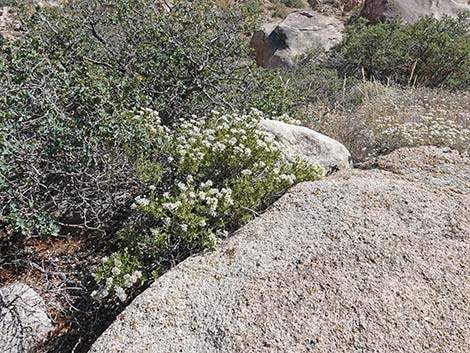 |
General: Mojave Sage (Salvia mohavensis) is a rounded shrub with unusual flowers. The inflorescence are papery clusters (white to dark blue) at the ends of flower stalks with blue, tubular flowers about 3/4- to 1-inch long that extend out from the papery clusters. Tubular flowers with single upper lip and three longer lower lips. The leaves are long-oval with petioles and a distinctive crinkly texture. The tubular flowers are asymmetrical with one upper corolla-lobe and three lower lobes. The middle-lower-corolla-lobe is long and narrow. Mojave Sage is an uncommon component of vegetation communities on well-drained sandy, gravelly, and rocky soils on upper bajadas into the lower mountains in the Upper Sonoran (Mojave Desert Scrub and Pinyon-Juniper Woodland) life zone. Family: Mint (Lamiaceae). Other Names: |
 |
Plant Form: upright, spreading shrub. Height: Usually about shin- to knee-high; to about 3 feet. Bark: Stems: Square in cross section. Leaves: Oblong to oval, to 2-inchs long; edges with small, rounded teeth; crinkled (puckered) surfaces. Flowers: Blooms summer through fall. Inflorescence: papery clusters, usually 1 at the end of each flower stalk. Flower: blue; tubular 3/4- to 1-inch long; asymmetrical (appears as 4 petals); flowers originate from the papery clusters; stamens and style protrude from the flower tube, stamens yellow. Width of middle lower corolla lobe relatively long and narrow (less than half its length). |
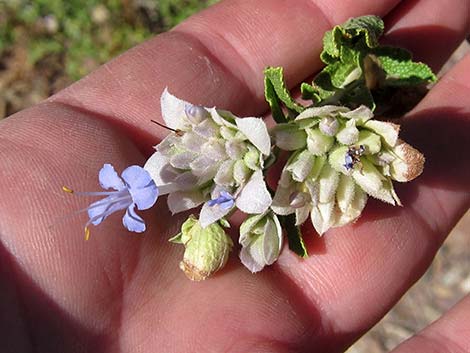 |
Seeds: Fruit: Small brown nutlet. Habitat: Dry, well-drained sandy, gravelly, and rocky soils on upper bajadas and moderate slopes in the lower mountains. Elevation: About 1,000 to 5,000 feet. Distribution: Southern California and Arizona. Comments: |
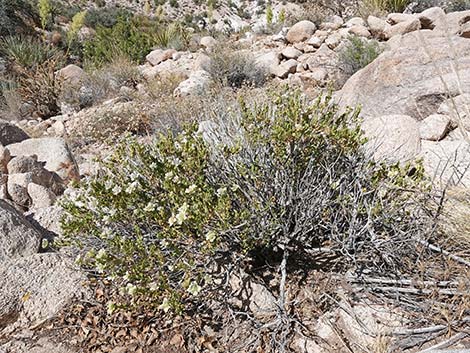 |
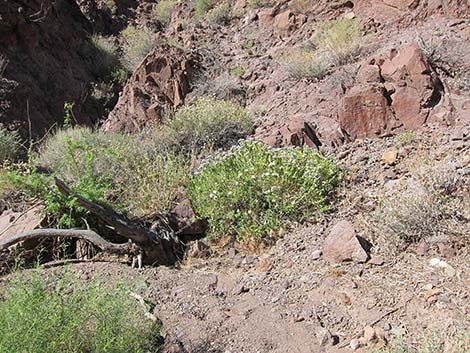 |
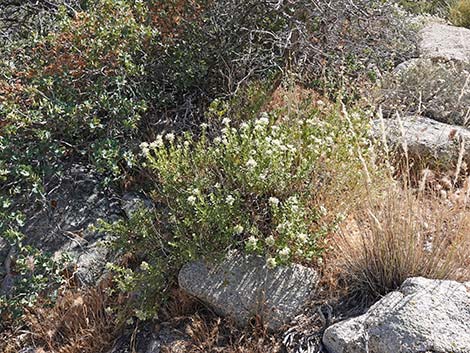 |
 |
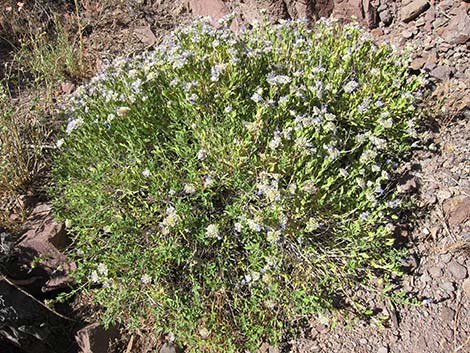 |
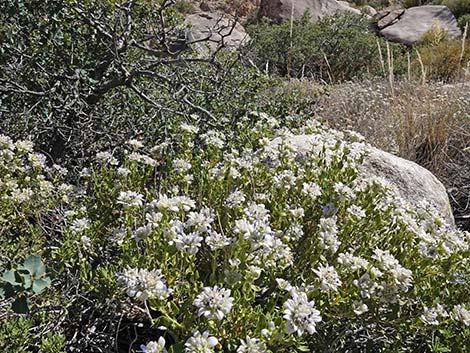 |
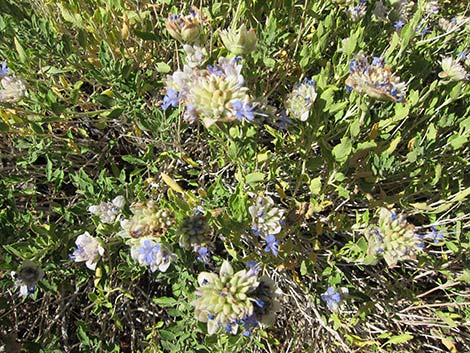 |
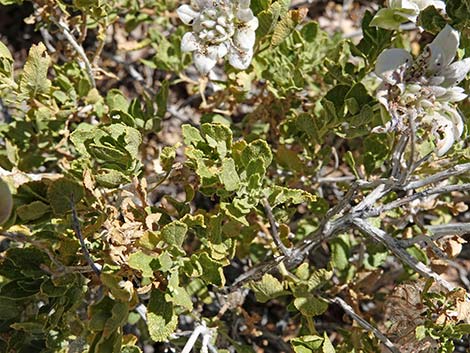 |
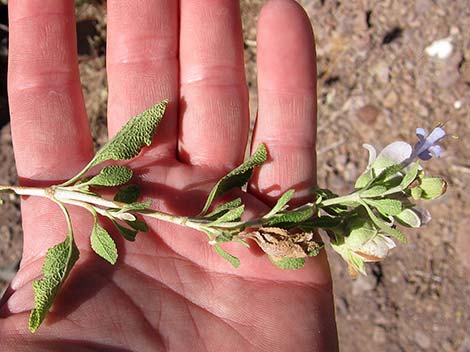 |
 |
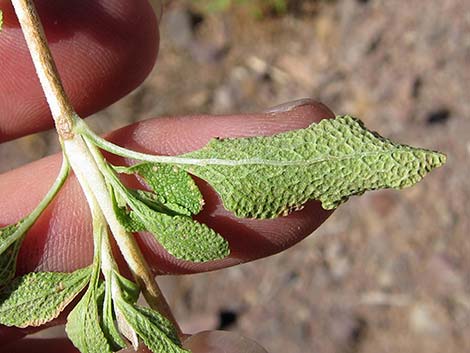 |
 |
 |
 |
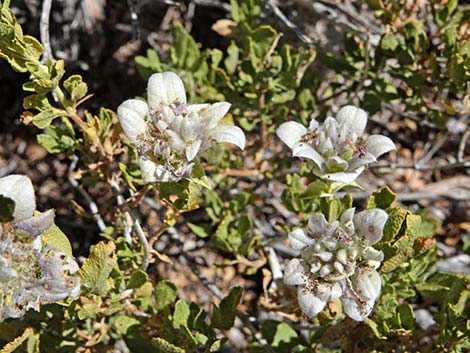 |
 |
 |
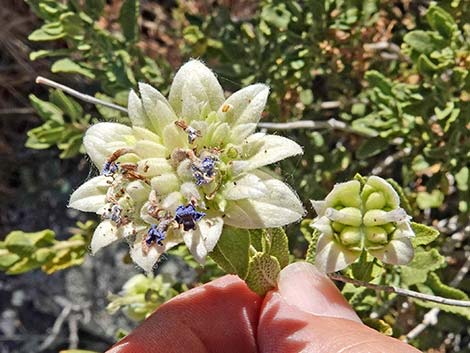 |
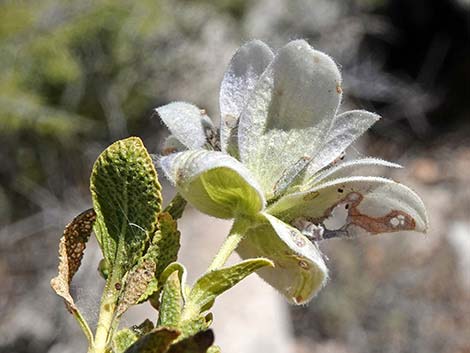 |
 |
 |
 |
 |
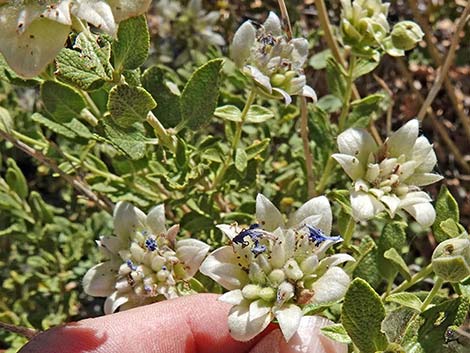 |
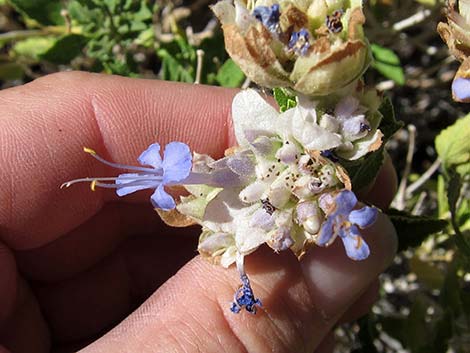 |
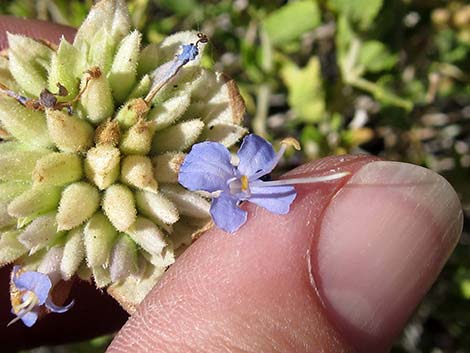 |
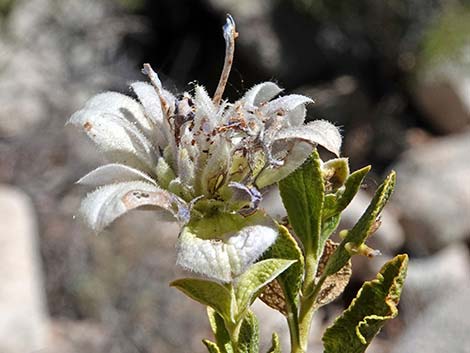 |
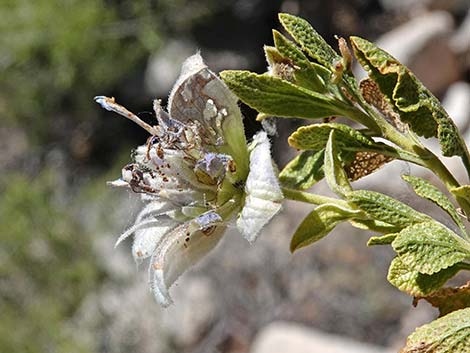 |
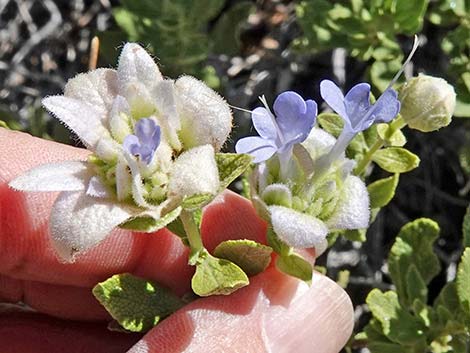 |
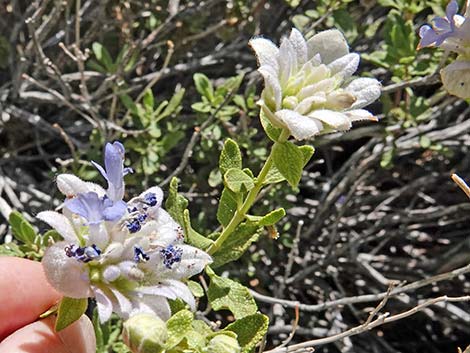 |
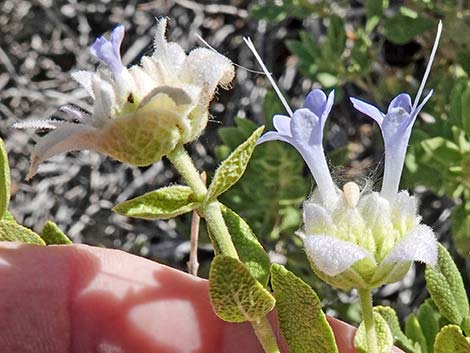 |
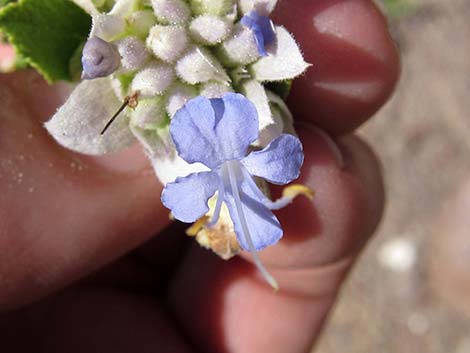 |
Note: All distances, elevations, and other facts are approximate. Names generally follow the USDA database.
![]() ; Last updated 240629
; Last updated 240629
| All Shrubs | Plant Species Index | Glossary | Copyright, Conditions, Disclaimer | Home |